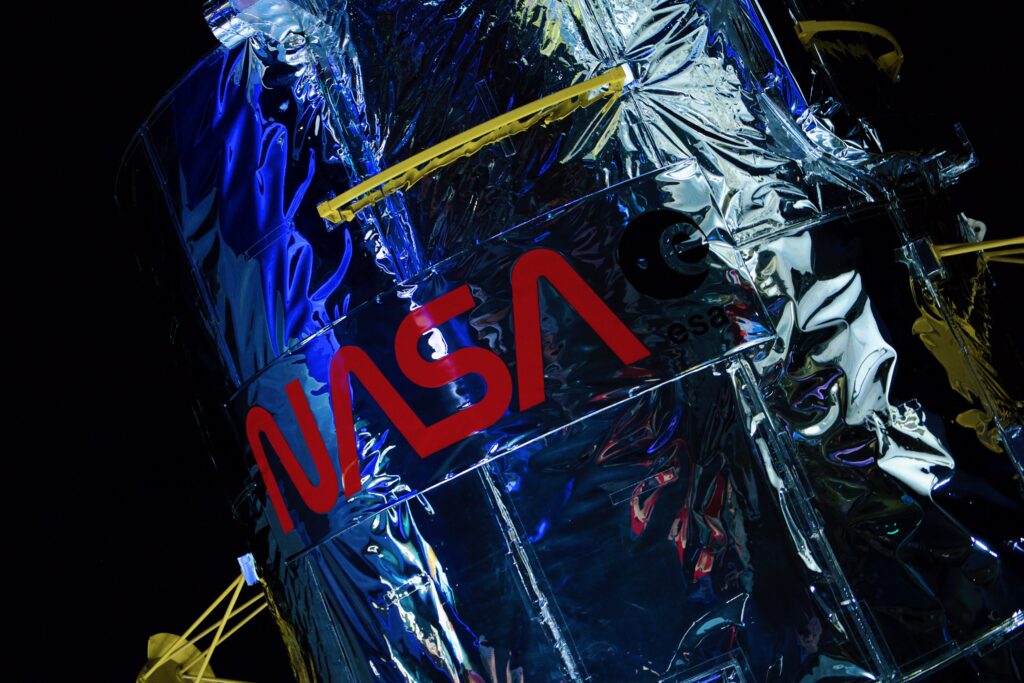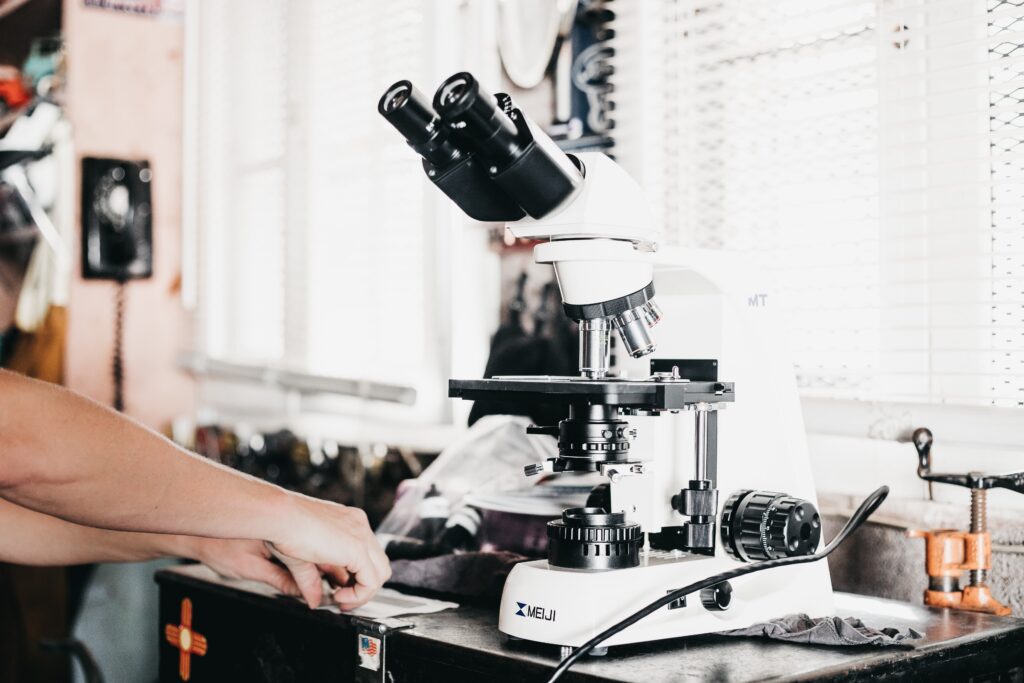
Have you ever wondered how to determine the magnification of your telescope? Well, look no further! In this article, we will explore the simple steps you can take to calculate the magnification of your telescope, allowing you to get the most out of your stargazing adventures. Understanding this crucial aspect of your telescope will not only enhance your viewing experience but also deepen your appreciation for the wonders of the night sky. So let’s get started and unlock the secrets of your telescope’s magnification!

Factors Affecting Telescope Magnification
When it comes to determining the magnification of your telescope, there are several factors that come into play. Understanding these factors will not only help you choose the right telescope for your needs but also allow you to make the most of your observing experience.
Objective Lens/Focal Length
The focal length of the objective lens, which is the main lens of your telescope, is one of the primary factors that affects magnification. The longer the focal length, the higher the magnification potential of your telescope. This means that telescopes with longer objective lens focal lengths have the ability to achieve higher magnifications.
Eyepiece Focal Length
The focal length of the eyepiece is another crucial factor in determining the magnification of your telescope. The eyepiece acts as a magnifying lens and, when combined with the objective lens, determines the overall magnification. Generally, the shorter the focal length of the eyepiece, the higher the magnification. However, it’s essential to strike a balance between magnification and image quality, as extremely high magnifications can result in blurry or distorted images.
Exit Pupil Diameter
The exit pupil diameter refers to the size of the beam of light that leaves the eyepiece and enters your eye. It plays a significant role in determining the brightness of the image you see through the telescope. A larger exit pupil diameter provides a brighter image, while a smaller exit pupil diameter may result in a dimmer image. To calculate the exit pupil diameter, simply divide the eyepiece focal length by the telescope’s focal ratio.
Barlow Lens
A Barlow lens is an accessory that can further enhance the magnification of your telescope. It is essentially a diverging lens that increases the effective focal length of your telescope when placed between the eyepiece and the telescope’s focuser. By using a Barlow lens, you can effectively double or even triple the magnification of your existing eyepiece. It is worth noting that while the Barlow lens increases magnification, it may also reduce the field of view and image brightness.
Calculating Telescope Magnification
Now that we understand the factors that affect telescope magnification, let’s explore how to calculate it.
Using the Telescope’s Specifications
One way to determine the magnification of your telescope is by referencing the manufacturer’s specifications. Most telescopes will provide information about the focal length of the objective lens or the telescope as a whole. By dividing the focal length of the telescope by the focal length of the eyepiece, you can calculate the magnification. For example, if the telescope’s focal length is 1000mm and the eyepiece’s focal length is 20mm, the magnification would be 50x.
Using the Formula (Magnification = Telescope Focal Length / Eyepiece Focal Length)
If you are unable to find the telescope’s specifications or want to confirm the magnification, you can use a simple formula. Divide the telescope’s focal length by the eyepiece’s focal length to calculate the magnification. For instance, if the telescope’s focal length is 1200mm and the eyepiece’s focal length is 10mm, the magnification would be 120x.
Measuring the Focal Length of Your Telescope
To accurately calculate magnification, it is essential to know the focal length of your telescope. Here are a few methods you can use to measure it.
Knowing the Manufacturer’s Specifications
The easiest and most accurate way to determine the focal length of your telescope is by referring to the manufacturer’s specifications. These specifications can usually be found in the telescope’s manual or on the manufacturer’s website.
Using a Set Scale and Ruler
If you don’t have access to the manufacturer’s specifications, you can measure the focal length using a set scale and a ruler. To do this, set up your telescope and focus it on a distant object. Place a ruler or measuring tape parallel to the primary lens or mirror of your telescope and measure the distance between the lens or mirror and the image formed by the telescope. This distance will give you an estimate of the focal length.
Measuring Astronomical Objects
Another method to determine the focal length is by measuring the size of a known astronomical object in the telescope’s field of view. By comparing the observed size of the object to its known size, you can calculate the focal length of your telescope. However, this method requires a good understanding of the object’s size and may not be as accurate as the previous methods.
Determining the Focal Length of Your Eyepiece
To calculate magnification accurately, you need to know the focal length of your eyepiece. Here are a few ways to determine it.
Reading the Eyepiece Specifications
Similar to determining the telescope’s focal length, the easiest way to find the focal length of your eyepiece is by checking the manufacturer’s specifications. The eyepiece will usually have its focal length imprinted or labeled on it.
Using a Focal Length Measuring Tool
If the eyepiece specifications are not readily available, you can use a focal length measuring tool. These tools, such as an optical bench or a calibrated eyepiece holder, allow you to measure the focal length accurately. By focusing a distant object with the eyepiece and measuring the distance between the eyepiece and the image formed, you can determine the focal length.
Calculating Eyepiece Magnification
If you have access to the eyepiece’s apparent field of view and the telescope’s focal length, you can calculate the eyepiece’s magnification. Divide the telescope’s focal length by the eyepiece’s focal length to determine the magnification. For example, if the telescope’s focal length is 1000mm and the eyepiece’s focal length is 20mm, the magnification would be 50x.

Understanding Exit Pupil Diameter
Exit pupil diameter is an important consideration when determining the magnification of your telescope. Let’s explore what it means and how to calculate it.
Definition and Importance
Exit pupil diameter refers to the size of the beam of light that exits the eyepiece and enters your eye. It plays a vital role in determining the brightness of the image you see through the telescope. The exit pupil diameter is calculated by dividing the eyepiece focal length by the telescope’s focal ratio. A larger exit pupil diameter will result in a brighter image, while a smaller exit pupil diameter may result in a dimmer image. It is crucial to strike a balance between image brightness and magnification for optimal viewing comfort.
Calculating Exit Pupil Diameter
To calculate the exit pupil diameter, divide the eyepiece focal length by the telescope’s focal ratio. For instance, if the eyepiece focal length is 10mm and the telescope’s focal ratio is f/5, the exit pupil diameter would be 2mm (10mm / 5 = 2mm). This means that the size of the beam of light that enters your eye is 2mm in diameter.
The Role of Barlow Lens in Magnification
Barlow lenses are an accessory commonly used to enhance the magnification capabilities of telescopes. Here’s what you need to know about them.
Definition and Function
A Barlow lens is a diverging lens that increases the effective focal length of your telescope when placed between the eyepiece and the telescope’s focuser. It effectively doubles or even triples the magnification of your existing eyepiece. By increasing the effective focal length, a Barlow lens allows you to achieve higher levels of magnification without the need to purchase additional eyepieces. However, it is important to note that using a Barlow lens may also reduce the field of view and image brightness.
Calculation Example
To calculate the magnification when using a Barlow lens, divide the telescope’s focal length by the combined focal length of the eyepiece and Barlow lens. For example, if the telescope’s focal length is 1000mm, the eyepiece’s focal length is 20mm, and you are using a 2x Barlow lens, the magnification would be 50x (1000mm / (20mm x 2) = 50x).

Considering Practical Limitations
While magnification is an important factor to consider when using a telescope, it is crucial to be aware of practical limitations. These limitations can affect your viewing experience and the quality of the images you see.
Atmospheric Conditions
Atmospheric conditions, such as air turbulence and weather conditions, can impact the clarity and sharpness of the images seen through a telescope. Even with high magnification, viewing conditions with poor atmospheric stability can result in blurry or distorted images. It is always important to choose optimal viewing conditions, such as nights with clear skies and minimal atmospheric turbulence, to maximize the potential of your telescope’s magnification capabilities.
Telescope Quality and Optical Aberrations
The optical quality of your telescope and the presence of optical aberrations can affect the effectiveness of high magnification. Lower quality telescopes may introduce optical aberrations such as chromatic aberration or coma, which can reduce image clarity and sharpness. Before pushing the limits of your telescope’s magnification, it is advisable to ensure that your telescope is of good optical quality and free from significant aberrations.
Human Eye Abilities
While telescopes can achieve high levels of magnification, it is essential to consider the limitations of the human eye. The human eye has a maximum limit to its resolving power, known as the angular resolution. This means that beyond a certain magnification, increasing magnification further may not result in any additional details being visible. It is important to strike a balance between magnification and image quality to make the most of your observing experience.
Comfortable Viewing Magnification
Lastly, it is crucial to consider your own comfort while using the telescope. Extremely high magnifications can make it difficult to locate objects, keep them in view, and track their movements. Additionally, higher magnifications often result in narrower fields of view, making it challenging to observe larger objects such as galaxies or star clusters. Finding a balance between magnification and comfort is key to enjoying your observing sessions.
Factors Other Than Magnification to Consider
While magnification is an essential factor, it is not the only consideration when using a telescope. Here are a few other factors to keep in mind.
Field of View
The field of view refers to the extent of the observable area through the telescope. Higher magnifications often result in narrower fields of view, limiting the amount of sky or object you can see in a single view. It is important to consider the field of view when choosing eyepieces and magnifications, especially when observing larger celestial objects or trying to locate specific targets.
Image Brightness and Contrast
Magnification alone does not determine the brightness and contrast of the image seen through the telescope. Factors such as the telescope’s aperture and the quality of the optics can impact the brightness and contrast. A larger aperture allows more light-gathering capabilities, resulting in brighter and more detailed images. Similarly, high-quality optics can minimize light loss and aberrations, resulting in better image contrast.
Telescope Aperture
Aperture plays a significant role in determining the capabilities of your telescope. The aperture refers to the diameter of the primary lens or mirror of your telescope. A larger aperture allows greater light-gathering power, enabling you to see fainter objects and details. While magnification is important, a larger aperture often contributes more to the ability to observe fine details and faint objects.
Utilizing the Magnification
Now that you have a comprehensive understanding of telescope magnification, let’s explore how to utilize it effectively for various observing purposes.
Observing Celestial Objects
One of the primary uses of magnification is observing celestial objects such as the Moon, planets, and deep-sky objects. As the magnification increases, finer details on the lunar surface, planetary features, and structures in deep-sky objects become more apparent. It is important to experiment with different magnifications to find the optimal balance between magnification and image quality for each object.
Terrestrial Viewing
Telescopes can also be used for terrestrial viewing, such as wildlife observation or landscape viewing. While higher magnifications can bring distant objects closer, they may not always be suitable for such purposes. Extremely high magnifications can result in shakiness and make it challenging to track moving objects. When using a telescope for terrestrial viewing, it is advisable to use lower magnifications that provide a wider field of view and stable image.
Astrophotography
Magnification plays a crucial role in astrophotography, the art of capturing celestial objects through a camera attached to the telescope. Higher magnifications are often used to capture fine details and subtle features of planets, the Moon, or close-ups of specific objects. However, it is important to strike a balance between magnification and exposure time to avoid blurring due to Earth’s rotation. Experimenting with different magnifications and exposure settings can lead to stunning astrophotography results.
Experimenting with Different Magnifications
To fully explore the capabilities of your telescope, it is essential to experiment with different magnifications. This allows you to observe various celestial objects at different levels of detail and find the optimal magnification for each situation.
Testing Various Eyepieces
One of the easiest ways to experiment with different magnifications is by using various eyepieces with different focal lengths. By swapping out eyepieces, you can quickly adjust the magnification and observe the same object at different levels of detail. This allows you to find the optimal magnification for each object, considering factors such as image quality, field of view, and image brightness.
Adjusting Barlow Lens Usage
If you have a Barlow lens, you can experiment with different magnifications by adjusting its usage. Using a Barlow lens effectively doubles or triples the magnification of your existing eyepiece. By trying different combinations of eyepieces and Barlow lenses, you can explore a broader range of magnifications. Remember to consider factors such as field of view and image brightness when using Barlow lenses.
Understanding Optimal Magnification for Different Objects
Different celestial objects may require different magnifications to observe effectively. Experimenting with different magnifications and observing the same object at various levels of detail can help you understand the optimal magnification for each object. For example, planets often benefit from higher magnifications to reveal finer details, while larger deep-sky objects may require lower magnifications to fit within the field of view.
In conclusion, determining the magnification of your telescope involves considering factors such as the telescope’s focal length, eyepiece focal length, exit pupil diameter, and the use of Barlow lenses. By understanding these factors and experimenting with different magnifications, you can make the most of your telescope and enjoy various celestial observations, terrestrial viewing, and astrophotography. Remember to consider factors other than magnification, such as field of view, image brightness, and telescope aperture, to enhance your observing experience. Happy stargazing!








